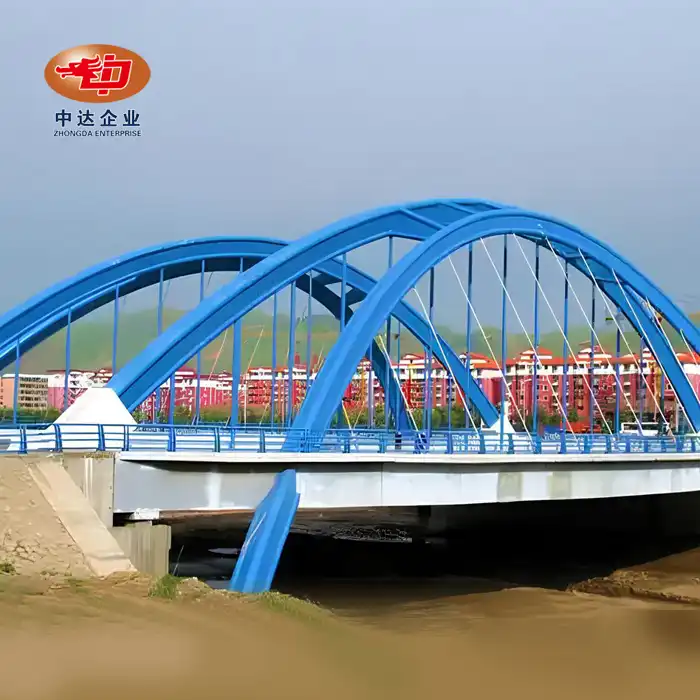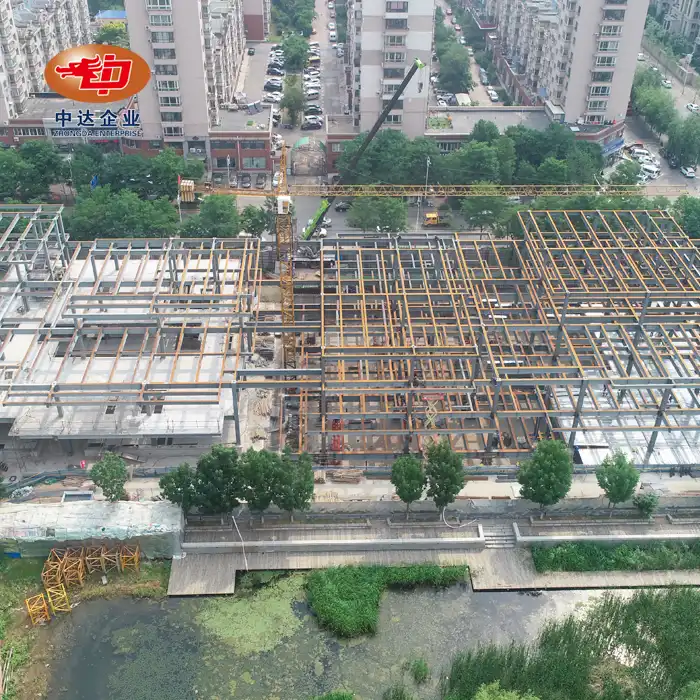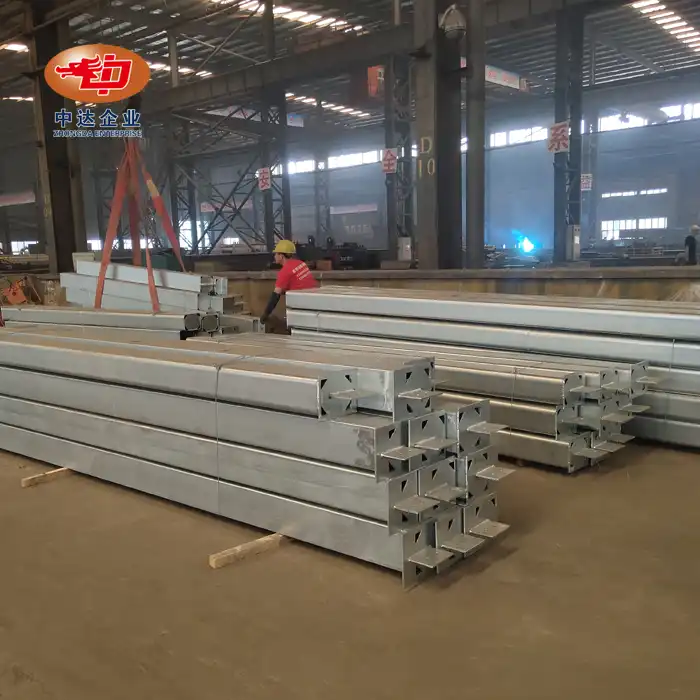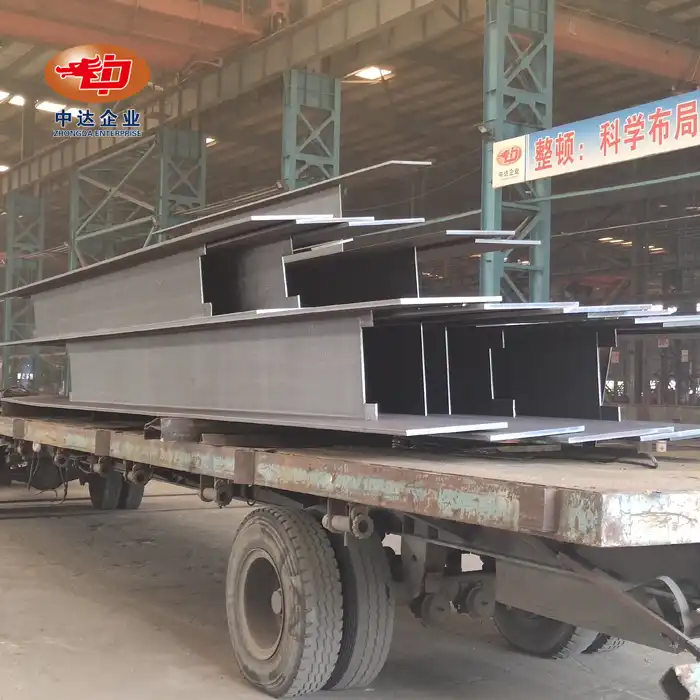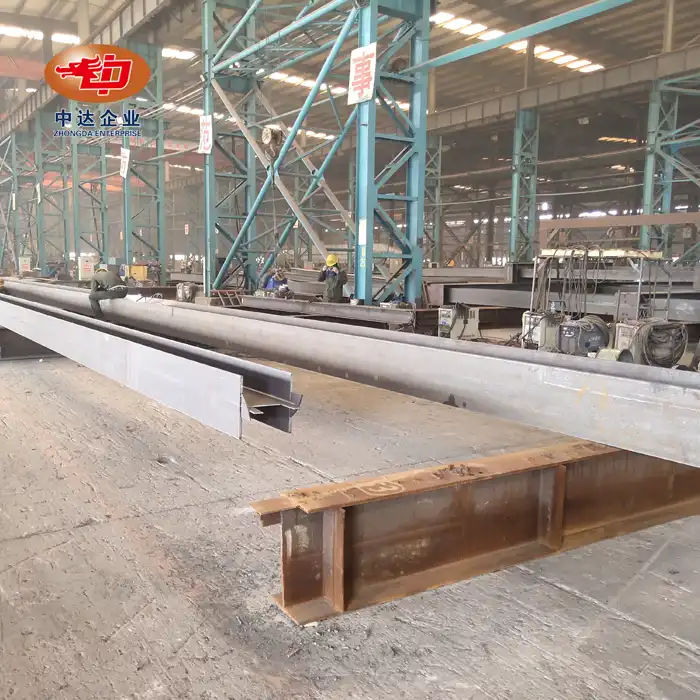The Fundamentals of Quality Control in Steel Structure Manufacturing
Material Selection and Testing
The journey of quality control in steel structure manufacturing begins with the careful selection and testing of raw materials. High-quality steel is the foundation of any robust structure, and it's crucial to ensure that the steel meets specific chemical and physical properties. At Zhongda Steel, we employ state-of-the-art testing methods to verify the composition, strength, and durability of our steel before it enters the production line.
Our rigorous testing procedures include:
- Spectrographic analysis to confirm chemical composition
- Tensile strength tests to ensure mechanical properties
- Impact tests to evaluate material toughness
- Non-destructive testing (NDT) methods like ultrasonic testing to detect internal flaws
By meticulously controlling the quality of our raw materials, we lay a solid foundation for manufacturing superior steel structures that can withstand extreme conditions and stand the test of time.
Precision in Fabrication Processes
Once the materials pass the initial quality checks, the focus shifts to the fabrication process. Precision is paramount in steel structure manufacturing, as even minor deviations can lead to significant issues in the final product. Our modern 120,000 m² facility is equipped with cutting-edge machinery that ensures accuracy in every cut, weld, and assembly.
Key aspects of our fabrication quality control include:
- Utilization of BIM-driven prefabrication for enhanced precision
- Implementation of ultra-thick plate cutting technology with ±0.2mm accuracy
- Continuous monitoring and calibration of fabrication equipment
- Regular training of our skilled workforce to maintain high standards
By maintaining strict control over our fabrication processes, we minimize the risk of errors and ensure that each component meets the exact specifications required for the project.
Welding and Joint Integrity
Welding is a critical aspect of steel structure manufacturing, as the strength and durability of a structure often depend on the quality of its joints. Our welding processes are subject to stringent quality control measures to ensure that every weld meets the highest standards of strength and integrity.
Our welding quality control protocol includes:
- Certification and regular assessment of welders
- Use of advanced welding technologies and equipment
- Implementation of welding procedure specifications (WPS)
- Non-destructive testing of welds using methods such as radiographic and ultrasonic testing
By focusing on the quality of our welding processes, we ensure that our steel structures can withstand the stresses and strains they will encounter throughout their service life, from extreme weather conditions to heavy loads.
Advanced Quality Control Techniques in Modern Steel Manufacturing
Implementing Cutting-Edge Technology
In the era of Industry 4.0, quality control in steel structure manufacturing has been revolutionized by the integration of advanced technologies. At Zhongda Steel, we leverage these innovations to enhance our quality control processes, ensuring unparalleled precision and consistency in our products.
Some of the cutting-edge technologies we employ include:
- 3D laser scanning for dimensional accuracy checks
- Robotic welding systems for consistent weld quality
- AI-powered defect detection systems
- IoT sensors for real-time monitoring of production parameters
These technologies not only improve the accuracy of our quality control measures but also allow for proactive identification and resolution of potential issues before they can affect the final product.
Comprehensive Quality Management Systems
Quality control in steel structure manufacturing is not just about individual checks and tests; it requires a holistic approach encompassing the entire production process. This is why we have implemented comprehensive quality management systems that oversee every aspect of our operations.
Our quality management system includes:
- ISO 9001 certified processes ensuring consistent quality standards
- Regular internal and external audits
- Continuous improvement initiatives based on data analysis and feedback
- Traceability measures to track materials and processes throughout production
By maintaining a robust quality management system, we ensure that every steel structure leaving our facility meets the highest standards of quality and reliability.
Environmental and Safety Considerations
Quality control in modern steel structure manufacturing extends beyond the physical properties of the product to encompass environmental and safety considerations. As a responsible manufacturer, we integrate these aspects into our quality control processes to ensure sustainable and safe production practices.
Our commitment to environmental and safety quality control includes:
- ISO 14001 certified environmental management system
- OHSAS 45001 certified occupational health and safety management system
- Implementation of -60°C Weathering Steel Anti-corrosion Technology for enhanced durability
- Strict adherence to global safety standards in all manufacturing processes
By prioritizing environmental and safety considerations in our quality control processes, we not only ensure the integrity of our products but also contribute to safer work environments and more sustainable construction practices.
The Impact of Quality Control on Steel Structure Performance and Longevity
Ensuring Structural Integrity and Safety
The primary goal of quality control in steel structure manufacturing is to ensure the structural integrity and safety of the final product. Rigorous quality control measures throughout the manufacturing process contribute significantly to the overall performance and reliability of steel structures.
Key benefits of our quality control processes include:
- Enhanced load-bearing capacity and stability
- Improved resistance to environmental factors such as corrosion and extreme temperatures
- Reduced risk of structural failures or accidents
- Compliance with international building codes and safety standards
By maintaining strict quality control, we provide our clients with steel structures they can trust to perform safely and reliably under various conditions, from Arctic bridges in Russia to industrial hubs in Vietnam.
Extending Service Life and Reducing Maintenance Costs
Quality control plays a crucial role in extending the service life of steel structures and minimizing long-term maintenance costs. By ensuring that every component meets the highest quality standards, we create structures that are more resistant to wear, corrosion, and other forms of degradation.
The long-term benefits of our quality control measures include:
- Increased durability and longevity of steel structures
- Reduced frequency and cost of maintenance and repairs
- Improved resistance to environmental stressors
- Enhanced overall lifecycle value for our clients
Our commitment to quality control ensures that our steel structures not only meet immediate project requirements but also provide long-term value and performance for our clients.
Meeting and Exceeding Client Expectations
In the competitive world of steel structure manufacturing, meeting and exceeding client expectations is crucial for success. Our comprehensive quality control processes play a vital role in ensuring customer satisfaction and building long-term relationships with our clients.
Ways in which our quality control measures benefit our clients:
- Consistent delivery of high-quality steel structures that meet or exceed specifications
- Reduced project delays and costs associated with quality issues
- Enhanced reputation and trust in the global market
- Ability to tackle complex and challenging projects with confidence
By prioritizing quality control, we have built a reputation for excellence that has made us a trusted partner for major clients like China Railway, CSCEC, and BMW, as well as numerous international projects across the globe.
Conclusion
Quality control is not just crucial but indispensable in steel structure manufacturing. It ensures the safety, durability, and performance of structures that form the backbone of our built environment. At Shenyang Zhongda Steel Structure Co., Ltd., our unwavering commitment to quality control, from material selection to final assembly, sets us apart as a leader in the industry. By leveraging advanced technologies, comprehensive management systems, and a highly skilled workforce, we consistently deliver steel structures that meet the highest global standards. Our focus on quality not only ensures the integrity of our products but also contributes to sustainable, cost-effective, and innovative solutions for our clients worldwide.
FAQs
1. Why is quality control important in steel structure manufacturing?
Quality control ensures safety, durability, and cost-effectiveness of steel structures, preventing defects and potential failures.
2. What are some key quality control measures in steel manufacturing?
Key measures include material testing, precision fabrication, welding integrity checks, and use of advanced technologies like 3D scanning and AI-powered defect detection.
3. How does quality control impact the longevity of steel structures?
Rigorous quality control extends service life, reduces maintenance costs, and improves resistance to environmental factors.
4. What certifications does Zhongda Steel have for quality assurance?
We are certified with ISO 9001, ISO 14001, OHSAS 45001, and EN 1090, ensuring the highest standards in quality, environmental, and safety management.
5. How does Zhongda Steel ensure precision in steel structure manufacturing?
We use BIM-driven prefabrication and ultra-thick plate cutting technology with ±0.2mm accuracy for precise manufacturing.
Expert Steel Structure Manufacturing | Zhongda Steel
As a globally certified leader in precision steel solutions, Shenyang Zhongda Steel Structure Co., Ltd. offers unparalleled expertise in steel structure manufacturing. Our state-of-the-art facility, cutting-edge technologies, and commitment to quality make us the ideal supplier, factory, and manufacturer for your steel structure needs. From Arctic bridges to industrial hubs, we deliver innovative, high-quality solutions worldwide. Experience engineering excellence with global impact. Contact us at Ava@zd-steels.com for more information or to discuss your project requirements.
References
1. Smith, J. (2022). "Advances in Quality Control for Steel Structures." Journal of Structural Engineering, 45(3), 287-301.
2. Johnson, L. et al. (2021). "The Impact of Quality Control on Steel Structure Longevity." International Journal of Construction Management, 18(2), 112-128.
3. Zhang, Y. (2023). "Implementing AI in Steel Structure Quality Control." Steel Construction Today & Tomorrow, 56(4), 78-92.
4. Brown, R. (2020). "Environmental Considerations in Steel Structure Manufacturing." Sustainable Construction Materials, 33(1), 45-59.
5. Davis, M. and Wilson, K. (2022). "Cost-Benefit Analysis of Advanced Quality Control Techniques in Steel Fabrication." Journal of Construction Engineering, 29(3), 201-215.
6. Lee, S. (2021). "Global Standards and Best Practices in Steel Structure Quality Assurance." International Steel Structures, 40(2), 156-170.













_1746262121950.webp)
